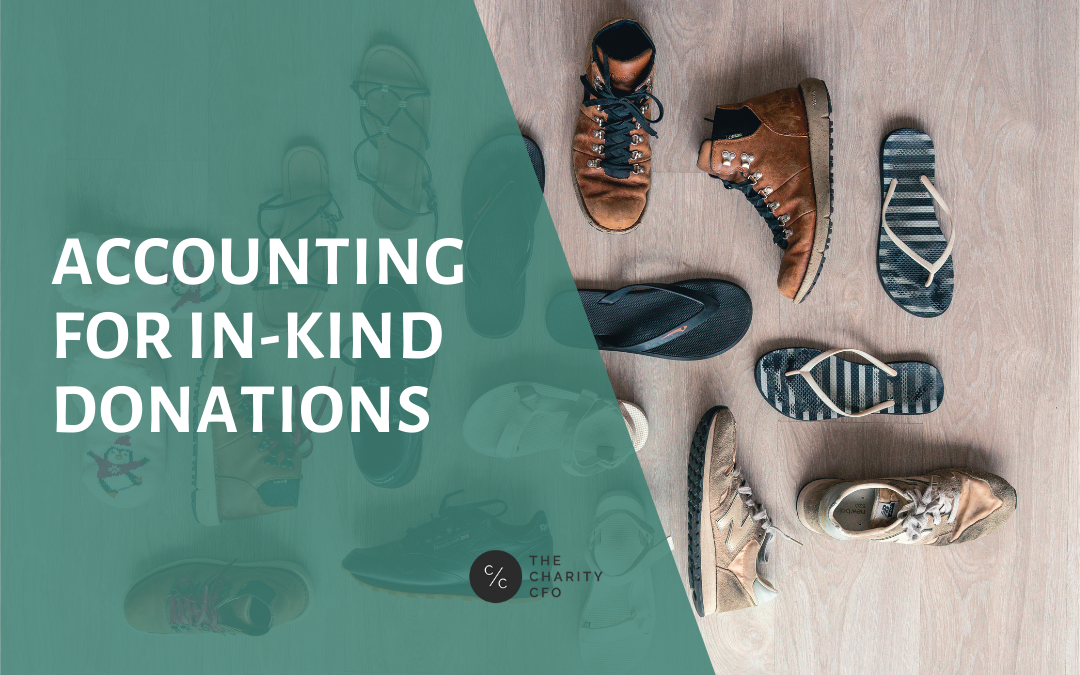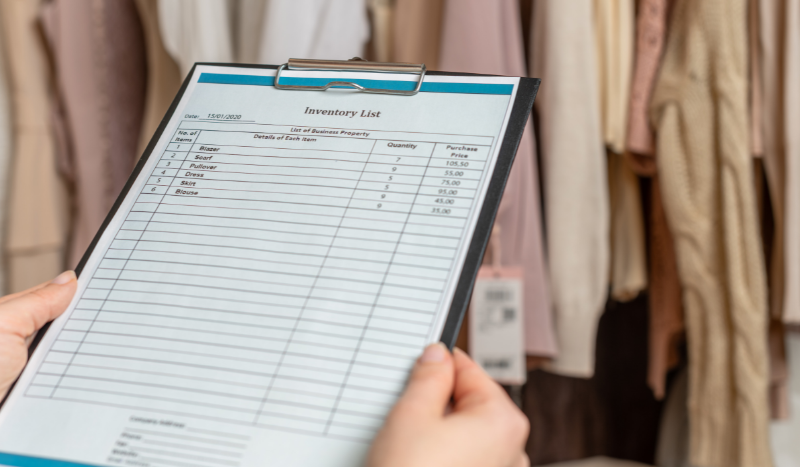What is an inkind donation?
No time to read this article now? Download it for later.
In-kind donations are any non-cash gift of goods or services that your organization receives from donors.
These in-kind gifts can help your nonprofit get the resources it needs to carry out programs without constantly hounding your donors for cash. Some people are more likely to give if they know that their donation will go directly to helping others, rather than paying overhead costs or admin salaries.
For this reason, inkind gifts are an invaluable tool in your fundraising toolkit. But accounting for in-kind donations presents its own unique challenges.
Almost any non-cash gift to your nonprofit can be considered an in-kind donation, but most of them fall into one of two categories: goods or services.
Here’s what this might look like:
- A food pantry receives a new walk-in freezer from an appliance store (donation of in-kind goods)
- A licensed electrician then volunteers to install and wire the new freezer for free (donation of in-kind services)
Hopefully you already know a bit about what in-kind donations are and how they help grow your mission. In this article, we’ll dig into how to account for in-kind donations on your nonprofit’s books.
Why accounting for in-kind donations matters
Accounting for in-kind donations isn’t just important; it’s required for many nonprofit organizations.
You need to track and report in-kind donations if your organization is required to…
- Prepare financial statements per Generally Accepted Accounting Principles (GAAP)
- Submit to an annual audit
- File IRS Form 990 (in-kind goods only)
While it may not be required to track in-kind services on your IRS Form 990, it’s a good idea to do so because many grants, lenders, and even state laws might require it for funding.
One of the biggest reasons to account for in-kind donations is because it helps you reflect the true impact your organization creates in the community.
For the purposes of GAAP, donations of goods and services are valid revenue. If you don’t account for in-kind gifts properly, you risk understating the revenue (and expenses) of your organization, making you look smaller to donors, grant writers, banks and other organizations whose support you need.
How accounting for in-kind gifts works
There are two steps to properly accounting for in-kind donations: establishing fair market value and recording the revenue and expense transactions associated with your in-kind gifts.
Step #1: Establish Fair Market Value
Fair market value is the price you’d pay on the open market if you had to purchase the item or service instead of having it donated.
To establish fair market value, you can check the price on the open market, get a competitor’s quote, use a third-party source, ask your donor, look at a salary survey, etc.
The key is to set a standard for obtaining fair market value for a type of good or service and be consistent in how you use and track that value.
How to calculate fair market value for in-kind goods:
The most common way to establish value for in-kind goods is to look for the average cost, or conservative estimate, of a generic line-item product at a high-volume retailer like Amazon or Walmart.
There’s no need to get specific for every type of donated item. It’s recommended that you lump materials and goods together as much as possible, so you’re not burdened with this task.
Example #1: Canned beans
If you received 10 types of canned beans from two different brands, it’s acceptable to pick one brand and one type of canned bean and account for the total donation with that value.
You can record it like this:
In-Kind Good Received: 14 oz canned beans
Qty: 24 cans
Estimated Value: $0.79 each
Total Estimated Value: $18.96
Date Received: January 12, 2022
We’ll look at one more example that’s not as straightforward…
Example #2: Office chairs
Let’s say you received 10 used office chairs.
They’re in great condition, but an assortment of styles and brands.
The easiest way to get fair market value is to use an online market like Craigslist. Search for office chairs, do a quick scan of the price listed, take the lowest average price, and use that value for all ten chairs. The same can be done with many in-kind goods: clothing, furniture, office supplies, etc.
Once you have those fair market values in place, use the same methodology consistently.
Don’t use Craigslist to get fair market value for office chairs and Facebook Marketplace for a new conference table. Don’t use generic tracking for canned beans, and get specific on brand and type for boxed pasta. Stay consistent, and your books (and to-do list) will thank you.
NOTE: Donated or discounted use of real estate is also an in-kind good. So if you use donated space for your offices or programs, be sure you’re value it at the local market rate and record that value every month.
How to calculate fair market value for in-kind services:
When it comes to in-kind professional services (typically associated with licensure, like an attorney, contractor, CPA, electrician, or architect), you can use their standard hourly rate.
Let’s say you receive pro bono legal services throughout the year. You’d ask your volunteer how much they would have charged you if they were being paid. Typically, they’d use their standard hourly rate and the total number of volunteer hours spent on your organization.
NOTE: You can only apply their professional legal services fee to skilled volunteer hours. If a lawyer volunteers as a delivery driver, they’re just like any other volunteer. And most volunteer hours are not considered in-kind donations of services. According to Nolo.com, “the general rule is that such time may be counted only if the nonprofit would have purchased the services if they had not been donated.”
Step #2: Record Your In-Kind Donations
Now that you’ve established the fair market value, let’s take a look at accounting for the value of these donations on your books.
You’ll want to track all of your in-kind donations along with donor information in a spreadsheet or CRM, too. But here we’ll talk about how to record the financial transaction in your accounting system.
Recording In-Kind Donations of Goods:
- Record the fair market value of the donated items on the day that they were received (or pledged, if not delivered immediately). Classify the revenue as “in-kind revenue” or the appropriate revenue account on your chart of accounts.
- Record the same fair market value to either an expense account (if the items will be used immediately) or an asset account (if the items will remain in inventory or are tangible assets, like furniture or equipment).
Recording In-Kind Donations of Services:
The estimated market value gets recorded as both revenue and an expense on your profit and loss statement. Let’s say you received $10,000 worth of legal services, here’s how you could record that donation:
- Record the $10,000 donation to a revenue account (example: “In-Kind Gift Revenue: Service”)
- Then, record the expense side of the transaction in its appropriate functional expense account (example: “Professional Services”)
In the case of in-kind services, the revenue and expense should always cancel each other out within the given time period.
How does accounting for in-kind donations help?
Properly accounting for in-kind gifts increases your revenues and expenses by the same amount. In doing so, it directly impacts how outside observers perceive your organization by accurately reflecting the full impact you are making in the community.
If you want to learn more about in-kind donations and how accounting for them works, check out this video. Our Founder and CEO, Tosha Anderson, and Tim Hudson, Partner and COO, further break down in-kind donations for goods and services.
Our favorite tools for tracking and reporting in-kind gifts:
If you don’t have a system in place for tracking in-kind donations, check out these time-saving resources and tools you can use to get started today:
- In-Kind Donation Tracking Spreadsheet: Feeling stressed about creating yet another spreadsheet or template? No worries, Microsoft has a free Excel template (you can export it into Google docs) that tracks the donation, organization, date, value, and tax-exempt status.
- Free Online Giving Platform: RightGift.com is an online giving platform built for charities to create, manage, and collaborate virtual wish list campaigns. Right Gift also donates 1% cashback to the nonprofit of the donor’s choice for all purchases made on the platform.
- Customer Relationship Management Software: WildApricot by Personify is a customer relationship management tool that helps over 32,000 nonprofit membership organizations grow. They even have an in-kind donation tracking template ready for you to download and use.
The information in this article should make accounting for in-kind donations a bit easier, so you can invest more of your time focused on growing your mission.
Need help keeping track of your in-kind gifts?
The Charity CFO is your best option for outsourced accounting, from bookkeeping and financial statements to accounting for in-kind donations. Why? Because nonprofit accounting is all we do.
Let us worry about your books so you can focus on your mission. We’ll modernize and manage your accounting systems to save you time, money, and stress.
If you’re looking to simplify and optimize your bookkeeping process, we’d love to hear from you. Contact us today to learn more about how we can help your nonprofit and get started.
No time to read this article now? Download it for later.

Do You Struggle to Make Sense of Your Financial Statements?
Get our FREE GUIDE to nonprofit financial reports, featuring illustrations, annotations, and insights to help you better understand your organization's finances.
Get the free guide!





0 Comments